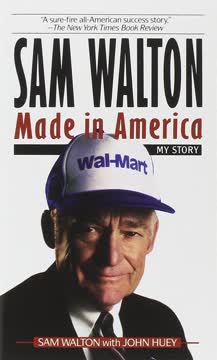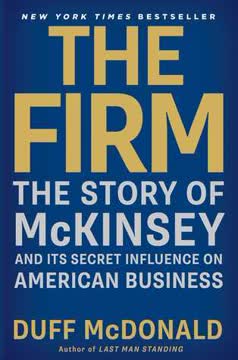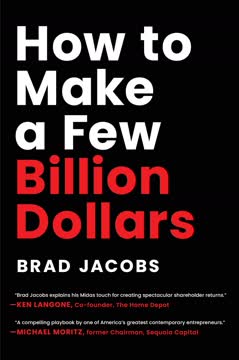Key Takeaways
1. Strategic inflection points can make or break a business
A strategic inflection point is a time in the life of a business when its fundamentals are about to change.
Defining moment. Strategic inflection points are pivotal moments that can lead to either unprecedented growth or rapid decline. They occur when the balance of forces shifts from the old ways of doing business to new ones. These shifts can be caused by various factors:
- Technological advancements
- Changes in competition
- Shifts in customer preferences
- New regulations
Recognizing the signs. Identifying a strategic inflection point early is crucial. Signs may include:
- Unexpected competition from new entrants
- Declining market share or profitability
- Changes in customer behavior
- Disruptive technologies emerging in your industry
Taking action. Successful navigation of a strategic inflection point requires decisive action, often before the full impact is clear. This may involve:
- Reassessing your business model
- Reallocating resources
- Developing new capabilities
- Making tough decisions about product lines or markets
2. Recognize and adapt to "10X" changes in your industry
When a change in how some element of one's business is conducted becomes an order of magnitude larger than what that business is accustomed to, then all bets are off.
Disruptive force. A "10X" change is a force so powerful that it fundamentally alters the competitive landscape. These changes can come from various sources:
- Technological breakthroughs
- New market entrants with radically different business models
- Regulatory shifts that redefine industry boundaries
Impact assessment. When faced with a potential "10X" change, ask yourself:
- How will this affect our current business model?
- What new opportunities does this create?
- What existing skills or assets might become obsolete?
- How quickly do we need to adapt?
Strategic response. Adapting to a "10X" change often requires a complete reimagining of your business. This may involve:
- Developing new core competencies
- Entering new markets or customer segments
- Forming strategic partnerships or acquisitions
- Fundamentally changing your value proposition
3. Cultivate a culture of constructive confrontation and debate
I believe in the value of paranoia. Business success contains the seeds of its own destruction.
Open communication. Foster an environment where employees at all levels feel comfortable challenging ideas and expressing concerns. This helps in:
- Identifying potential threats early
- Generating innovative solutions
- Avoiding groupthink and complacency
Encourage diversity. Bring together people with different perspectives and backgrounds to:
- Broaden the range of ideas and insights
- Challenge assumptions and conventional wisdom
- Identify blind spots in your strategy
Structured debate. Implement processes for constructive debate:
- Regular strategy review sessions
- Cross-functional problem-solving teams
- Anonymous feedback mechanisms
- "Devil's advocate" roles in decision-making
4. Let chaos reign, then rein in chaos during transitions
Resolution comes through experimentation. Only stepping out of the old ruts will bring new insights.
Embrace uncertainty. During times of significant change, it's crucial to:
- Encourage experimentation and risk-taking
- Allow for a period of "controlled chaos"
- Explore multiple options simultaneously
Phases of transition:
-
Let chaos reign:
- Encourage diverse ideas and approaches
- Allocate resources to multiple experimental initiatives
- Tolerate a higher level of uncertainty and ambiguity
-
Rein in chaos:
- Evaluate results of experiments
- Consolidate learnings and best practices
- Focus resources on the most promising directions
- Provide clear guidance and direction
Balance and timing. The key is knowing when to switch from the chaotic phase to the focused phase. This requires:
- Ongoing assessment of market conditions
- Clear metrics for evaluating experiments
- Strong leadership to make tough decisions
5. Experiment and stay ahead of technological shifts
You can't judge the significance of strategic inflection points by the quality of the first version.
Continuous innovation. Stay at the forefront of technological changes by:
- Allocating resources to R&D and innovation
- Encouraging a culture of experimentation
- Monitoring emerging technologies and trends
Early adoption. Be willing to experiment with new technologies, even if they're not yet perfect:
- Pilot programs for promising technologies
- Partnerships with innovative startups
- Internal "skunkworks" projects
Learning from failures. Embrace failures as learning opportunities:
- Conduct thorough post-mortems on failed experiments
- Share lessons learned across the organization
- Iterate and improve based on feedback and results
6. Clarity of direction is crucial when navigating change
Clarity of direction, which includes describing what we are going after as well as describing what we will not be going after, is exceedingly important at the late stage of a strategic transformation.
Vision and focus. During times of significant change, provide clear guidance on:
- The company's new direction and priorities
- What the organization will and will not pursue
- Key milestones and metrics for success
Communication strategy. Ensure that the new direction is understood throughout the organization:
- Frequent and consistent messaging from leadership
- Town halls and Q&A sessions
- Written communications (memos, emails, internal publications)
- Reinforcement through performance management and incentives
Alignment of resources. Back up the new direction with concrete actions:
- Reallocate budget and personnel to priority areas
- Divest or wind down non-core activities
- Adjust organizational structure to support new priorities
- Invest in developing new capabilities and skills
7. Your career is your business - be prepared for inflection points
Your career is literally your business. You own it as a sole proprietor.
Personal responsibility. Take ownership of your career development:
- Continuously assess your skills and market value
- Stay informed about industry trends and disruptions
- Invest in ongoing learning and skill development
Career inflection points. Be prepared for significant shifts in your career:
- Recognize signs of change in your industry or role
- Develop a network that can provide diverse perspectives
- Have a "Plan B" and be willing to pivot when necessary
Proactive career management:
- Regularly update your skills and knowledge
- Seek out new challenges and responsibilities
- Build a personal brand and reputation in your field
- Maintain financial flexibility to weather transitions
- Be willing to take calculated risks for growth opportunities
Last updated:
FAQ
What's "Only the Paranoid Survive" about?
- Author and Focus: Written by Andrew S. Grove, the book explores how businesses can navigate and exploit crisis points, termed as "strategic inflection points," that challenge their existence.
- Concept of Paranoia: Grove emphasizes the importance of paranoia in business, suggesting that constant vigilance and readiness for change are crucial for survival.
- Strategic Inflection Points: The book delves into how these points represent fundamental changes in business environments that can lead to either growth or decline.
- Real-World Examples: Grove uses his experiences at Intel to illustrate how companies can identify and respond to these critical changes.
Why should I read "Only the Paranoid Survive"?
- Insightful Business Strategies: The book provides practical strategies for recognizing and responding to major changes in the business environment.
- Real-Life Applications: Grove shares personal experiences and case studies from Intel, offering valuable lessons applicable to various industries.
- Understanding Change: It helps readers understand the dynamics of change and how to leverage them for competitive advantage.
- Leadership Lessons: The book offers insights into effective leadership during times of crisis and transformation.
What are the key takeaways of "Only the Paranoid Survive"?
- Embrace Change: Businesses must be prepared to adapt to significant changes in their environment to survive and thrive.
- Identify Inflection Points: Recognizing strategic inflection points early can provide opportunities for growth and prevent decline.
- Importance of Debate: Engaging in broad and intensive debate is crucial for distinguishing between signal and noise in business changes.
- Role of Leadership: Strong leadership is essential in guiding organizations through periods of uncertainty and transformation.
What is a "strategic inflection point" according to Andrew S. Grove?
- Definition: A strategic inflection point is a moment when the fundamentals of a business are about to change, which can lead to new opportunities or signal the beginning of the end.
- Causes: These points can be triggered by technological changes, shifts in competition, or changes in customer behavior.
- Impact: They require businesses to adapt their strategies and operations to align with the new environment.
- Examples: Grove uses Intel's transition from memory chips to microprocessors as a case study of navigating a strategic inflection point.
How does Andrew S. Grove suggest businesses handle strategic inflection points?
- Recognize Early Signs: Businesses should be vigilant and recognize early signs of change in their environment.
- Engage in Debate: Encourage open debate within the organization to clarify whether changes are significant or just noise.
- Experimentation: Allow for experimentation and chaos to explore new directions and solutions.
- Decisive Action: Once a new direction is clear, take decisive action to align resources and efforts with the new strategy.
What role does paranoia play in business according to "Only the Paranoid Survive"?
- Constant Vigilance: Paranoia in business means being constantly vigilant and aware of potential threats and changes in the environment.
- Prevent Complacency: It helps prevent complacency, ensuring that businesses are always prepared to adapt and respond to new challenges.
- Drive for Improvement: Paranoia can drive continuous improvement and innovation, keeping businesses competitive.
- Leadership Mindset: Leaders should instill a sense of paranoia in their teams to maintain a proactive and responsive organizational culture.
What are the "Six Forces" affecting a business as described by Grove?
- Existing Competitors: The power and competence of current competitors in the market.
- Suppliers: The influence and bargaining power of suppliers on a business.
- Customers: The demands and power of customers in shaping business strategies.
- Potential Competitors: The threat posed by new entrants into the market.
- Substitution: The risk of products or services being replaced by alternatives.
- Complementors: Businesses that offer complementary products or services that enhance a company's offerings.
How did Intel navigate its strategic inflection point according to Grove?
- Memory to Microprocessors: Intel shifted its focus from memory chips to microprocessors, recognizing the latter's potential for growth.
- Leadership Decision: Grove and Intel's leadership made the difficult decision to exit the memory business despite its historical significance to the company.
- Resource Reallocation: Intel reallocated resources and talent to support the burgeoning microprocessor business.
- Cultural Shift: The company embraced a new identity as a microcomputer company, aligning its strategy and operations with this vision.
What are some of the best quotes from "Only the Paranoid Survive" and what do they mean?
- "Only the paranoid survive." This quote encapsulates the book's central theme that constant vigilance and readiness for change are essential for business survival.
- "Business success contains the seeds of its own destruction." Success can lead to complacency, making businesses vulnerable to new threats and changes.
- "A strategic inflection point is a time in the life of a business when its fundamentals are about to change." This highlights the critical nature of recognizing and responding to major shifts in the business environment.
- "Let chaos reign, then rein in chaos." Encourages experimentation and exploration during times of change, followed by decisive action to establish order and direction.
How can businesses distinguish between signal and noise in changes?
- Broad Debate: Engage in broad and intensive debate within the organization to assess the significance of changes.
- Cassandras: Listen to the Cassandras, or those who are quick to recognize impending change and provide early warnings.
- Avoid First Version Trap: Don't judge the significance of changes based on the quality of the first version; consider the potential for improvement.
- Continuous Monitoring: Keep changes on the radar and continuously monitor their development to determine if they represent a strategic inflection point.
What lessons can individuals learn from "Only the Paranoid Survive" for their careers?
- Career as a Business: Treat your career as a business, taking responsibility for its direction and success.
- Adaptability: Be prepared to adapt to changes in your industry or role to remain competitive.
- Proactive Planning: Engage in proactive planning and experimentation to prepare for potential career inflection points.
- Continuous Learning: Invest in continuous learning and skill development to stay relevant in a changing environment.
How does Grove's experience at Intel illustrate the book's concepts?
- Real-World Application: Grove uses Intel's transition from memory chips to microprocessors as a case study to illustrate the concepts of strategic inflection points and business transformation.
- Leadership Challenges: He shares the leadership challenges faced during this transition, including decision-making, resource allocation, and cultural shifts.
- Success Story: Intel's successful navigation of its strategic inflection point serves as a testament to the effectiveness of Grove's strategies and insights.
- Lessons Learned: Grove reflects on the lessons learned from this experience, providing valuable insights for other businesses facing similar challenges.
Review Summary
Only the Paranoid Survive explores strategic inflection points in business and how to navigate them. Grove emphasizes the importance of recognizing industry changes, listening to middle management, and adapting quickly. Readers appreciate Grove's insights from his Intel experience but find some advice simplistic. The book's concepts of 10x forces and paranoia resonate with many, especially in tech. While some find it dated, others see its enduring relevance in today's fast-paced business environment. Overall, it's considered a valuable read for entrepreneurs and executives.
Similar Books










Download PDF
Download EPUB
.epub digital book format is ideal for reading ebooks on phones, tablets, and e-readers.





